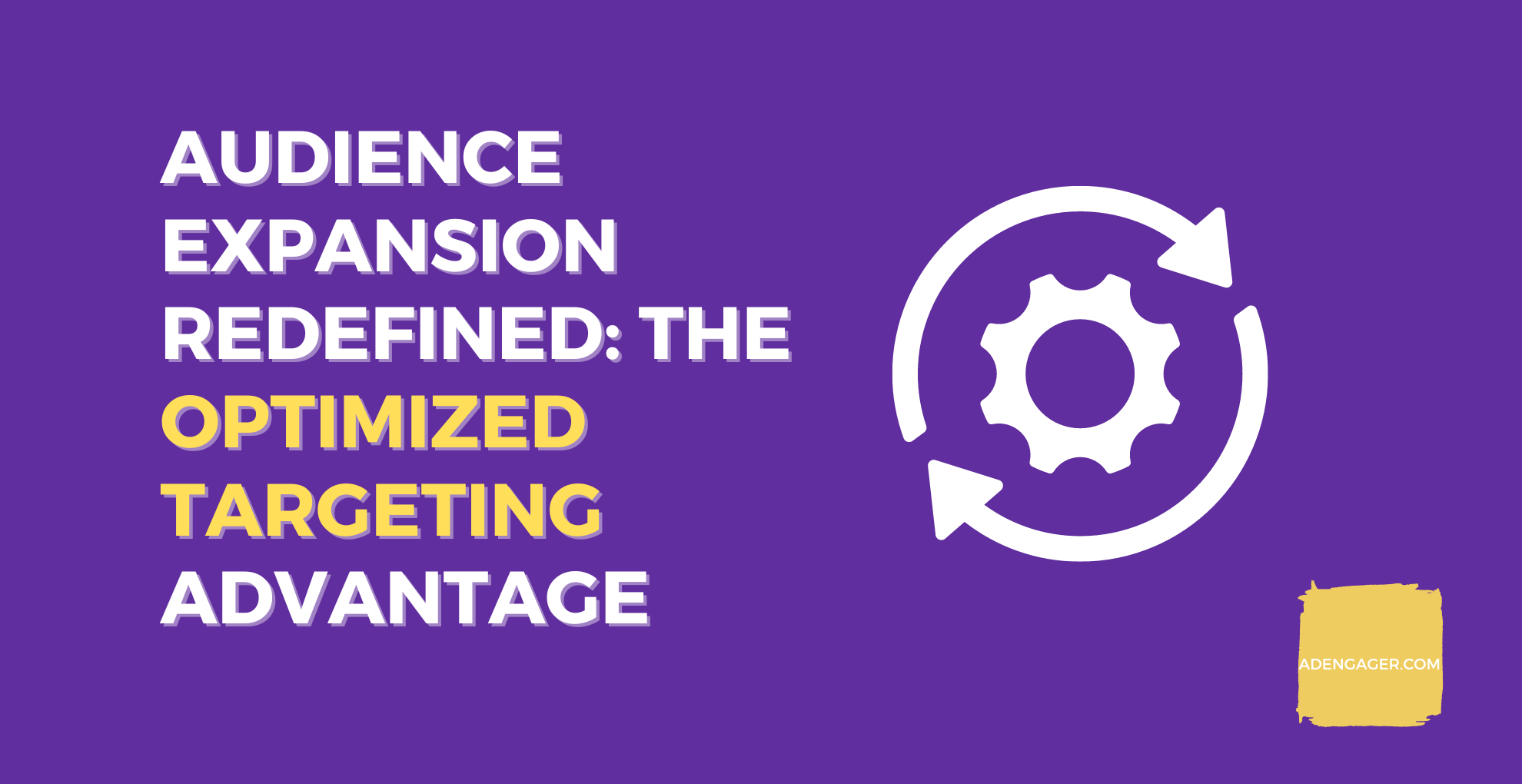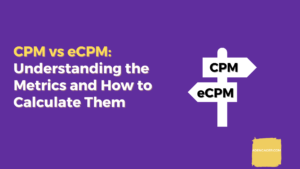Understanding Optimized Targeting Google Display & Video 360’s Feature

The pursuit of accuracy and efficiency in Programmatic advertising is ongoing. Audience growth and targeting optimisation ideas have taken centre stage as brands strive to maximise their reach and engagement. These elements highlight the significance of timing and targeting in communicating with an audience. The implementation of Optimised Targeting in Google Display & Video 360 (DV360) is a major step in this direction. The year 2023 will see the introduction of a revolutionary new tool called “Optimised Targeting,” which will use data-driven insights and machine learning to completely alter the nature of advertising campaigns. This article explores the developing landscape of optimised audience targeting, illuminating its nuanced characteristics, useful functions, and potential to boost the efficiency of digital marketing campaigns.
Comparing Lookalike Features Over Time:
Google has always been at the forefront of innovation, continually pushing the limits of audience expansion and targeting to better meet the needs of its advertising clients. Similar Audiences was one of the first of its kind and demonstrated Google’s dedication to using data to inform its decisions. By targeting people who had interests with their target demographic, advertisers were able to gradually expand their reach. Google’s machine learning expertise was put to use to find and connect with people who had similar habits to the study’s subjects. Notably, this capability connected without any hitches with a wide range of audience categories, such as first-party CRM data, in-market audiences, affinity audiences, and combined audiences.
In a similar vein, Targeting Expansion represented a major advance in broadening exposure. This function took advantage of Google’s formidable machine learning expertise by locating people whose interests were highly congruent with those of the original audience. Targeting Expansion supported audio, display, and video line items, giving advertisers a wide range of options for reaching new customers with their campaigns. This tactical shift enabled marketers to expand their reach beyond the parameters of conventional Targeting and connect with consumers they might have missed otherwise.
The dawn of a new era has arrived with the advent of Optimised Targeting, which goes well beyond the conventional wisdom of audience lookalike traits. As we explore more of this component, it becomes clear that Google’s trajectory of innovation has remained stable, with the company continually changing how businesses communicate with their customers.
There will be profound changes in the future of digital advertising as the industry develops. Most notably, the standard operating procedure of Similar Audiences is about to change. Google’s decision to kill off Similar Audiences is a strategic shift towards a more nuanced and sophisticated approach. This change prepares the way for Optimised Targeting to become Google Display & Video 360’s (DV360) new audience expansion pillar. This upcoming change not only demonstrates Google’s dedication to innovation, but it also foreshadows a more powerful and successful method of audience targeting that is poised to reshape the standards by which campaigns are measured.
Transition from Similar audience to Optimized Targeting
Optimised Targeting, a lauded iteration of lookalike functionalities, is at the forefront of Google’s cutting-edge developments in Display & Video 360. Optimised Targeting, which has its origins in Google’s machine-learning capability, is a shining example of the successful marriage of cutting-edge technology with meticulous planning. This cutting-edge function goes above and beyond the limitations of traditional manual Targeting in order to locate and interact with those individuals most likely to pursue the specified courses of action.
Understanding Optimized Targeting:
Compared to its predecessor, Similar Audiences, Optimised Targeting uses a novel principle to guide its operations. Instead of concentrating on commonalities like demographics and user habits, optimised Targeting zeroes focused on the exact objectives advertisers are hoping to achieve by appealing to their target consumers.
Both the theory and the method employed by Optimised Targeting set it apart from other methods. This newer version does away with the tried-and-true slider bar found in earlier releases. Optimised Targeting eliminates the need for a slider to modify similarity levels, which was used by Similar Audiences and Targeting Expansion. This shift indicates a more streamlined and automated approach, with bids and tactics serving as the dynamic modulators to keep the breadth and scope of campaigns in line with their advertisers’ goals.
The advent of Optimised Targeting signals a new era in which machine learning plays a pivotal role in honing communication with potential customers. Optimised Targeting ushers in a new era of nuanced Targeting, where accuracy and efficiency are intimately linked, by focusing on specific actions rather than broad interests and doing away with the slider bar.
Optimized Targeting vs. Previous Lookalike Features:
Optimised Targeting emerges as a revolutionary departure from conventional wisdom, reshaping the very essence of the “lookalike” concept; whereas its forerunners primarily focused on audiences similar to each other in terms of interests and profiles, the new approach introduced by Optimised Targeting goes beyond the realm of human likeness and delves into the realm of audience-brand affinity. Optimised Targeting ushers in a new era of engagement based not just on resemblance but on actual resonance by gauging the likelihood of viewers creating meaningful ties with a brand rather than merely copying attributes.
One of the most important aspects of this shift is how well Optimised Targeting works with automated bidding tactics. Through this cooperative effort, advertising will have access to unprecedented precision. Campaigns can achieve peak efficiency by embracing automation’s power to instantly adjust bids for maximum impact. When it comes to display, video, and audio line items, Optimised Targeting is now in charge, having taken over from Targeting Expansion. Google’s dedication to improving and expanding targeting paradigms is highlighted by this change, which gives marketers a flexible new resource beyond the usual confines of the web.
The unique method used by Optimised Targeting serves as an example of progress. In contrast to Similar Audiences’ scattershot approach to growth, this method narrows in on measurable KPIs. Optimised Targeting zeroes in on audiences primed for certain behaviours, whereas Targeting Expansion looked to increase reach by mimicking interests. Because it combines automation with outcomes, this strategy shift reshapes the landscape of audience expansion and paves the way for the actualization of key performance indicators.
Optimized Targeting vs Similar Audiences vs Targeting Expansion
| Feature | Optimized Targeting | Similar Audiences | Targeting Expansion |
|---|---|---|---|
| How it works | Uses machine learning to identify audiences that are most likely to convert, based on your campaign goals and performance data. | Finds audiences that are similar to your existing target audience, based on their interests and demographics. | Expands your reach to audiences that are similar to your existing target audience, based on their interests and demographics. |
| Pros | More precise and efficient than Similar Audiences or Targeting Expansion. Can help you reach more people who are likely to convert. Can be used with any type of audience, including first-party audiences, custom audiences, and lookalike audiences. | Easy to set up and use. Can be used with any type of audience, including first-party audiences, custom audiences, and lookalike audiences. | Can help you reach more people who are similar to your existing target audience. |
| Cons | More complex to set up than Similar Audiences or Targeting Expansion. May not be as effective for all types of campaigns. | Not as precise as Optimized Targeting. May not be as effective for campaigns with specific conversion goals. | Not as effective as Optimized Targeting for reaching audiences who are likely to convert. |
Implementation and Best Practices:
Implementation and Best Practises: Optimised Targeting promises a strategic leap for those beginning new campaigns inside the area of Google Display & Video 360. Advertisers will be given the opportunity to participate in Optimised Targeting at the outset of each campaign. This decision was motivated by a dedication to the success of the campaign, although it is optional if other measures are necessary. Marketers can adjust their methods to suit the specifics of their campaigns and the needs of their target demographics.
Campaigns that were already using Audience Expansion will have their targeting automatically refined as part of Google’s commitment to smooth transitions. This switch highlights Google’s intention to guarantee a consistent and unobtrusive evolution of strategies, providing advertisers with a seamless transfer between tools while increasing the efficacy of their campaigns.
Items that cater solely to a 1st party audience and are equipped with Targeting Expansion have access to a special strategic configuration. This setting will be updated when Optimised Targeting is implemented. As the shift develops, optimised targeting will become more prominent, pushing targeting expansion into the background. While the excluded seed list is gone, the original 1st party audience lives on, simplifying the audience environment.
The guiding principle behind Optimised Targeting was making sure that we hit our KPIs without going over our Target Cost Per Acquisition (CPA). This inherent congruence highlights its usefulness for initiatives aiming for significant results within a constrained financial plan. Advertisers can trust that their campaigns will run smoothly, allocating resources where they will have the greatest impact.
Optimised Targeting is built on a foundation of vigilance and flexibility. Effective marketing success requires close attention to budget details. This preventative method gives marketers the ability to fine-tune their bids and tactics with confidence. Keeping an eye on how the model evolves over time is crucial for determining what adjustments need to be made to achieve the best possible trade-off between scalability and performance. Marketers can unlock the full potential of Optimised Targeting and successfully navigate the ever-changing digital advertising landscape if they adopt these best practises.
Tips
Here are some tips to enhance the effectiveness of your Optimized Targeting campaigns:
- Define Clear Goals:Set Precise Objectives First, it’s important to define your campaign’s specific objectives. Campaign success depends on clearly defined goals, such as raising brand recognition, increasing sales, or attracting new leads. Adjust your parameters for Optimised Targeting so that you can achieve these aims.
- Diversify Audiences:Increase your reach by appealing to a wide variety of viewers by diversifying your audience. To get the most out of your Optimised Targeting campaigns, make use of first-party audiences, bespoke audiences, and lookalike audiences. You can reach a larger pool of people who might be interested in what you have to offer if you aim at several different types of audience.
- Allocate Budget and Monitor Progress:Set a realistic budget for your Optimised Targeting campaigns and keep an eye on how they’re doing. Keeping tabs on the numbers on a regular basis will keep costs down and help you reach your goals. Campaign success can be gauged by monitoring efforts, allowing for fine-tuned course corrections.
- Practice Patience: Be patient and understand that Mastering Optimised Targeting will take some time. Rapid outcomes are not necessarily guaranteed. Give your campaigns plenty of time to run and collect data before making any major adjustments. If you’re patient, you’ll get better data about how well things are working.
- Experiment with Settings:Once you have the framework for your Optimised Targeting campaign in place, try out different configurations to see what works best for you. See how changes to targeting, bids, and other settings affect results. You can refine your strategy with the help of experiments like this.
- Leverage Performance Partners:If you’re finding your way around Optimised Targeting optimisation to be a bit of a challenge, you may want to look into enlisting the aid of a performance partner. These professionals can help with the launch, maintenance, and optimisation of your campaign. You may rest easy knowing that your campaigns are in good hands with a performance partner.
Conclusion
Finally, the extraordinary rise of Google’s lookalike features exemplifies the ever-changing character of digital advertising. Each new development—from Similar Audiences’ conception to Targeting Expansion’s growth—has represented a significant step towards perfecting audience engagement. However, with the advent of Optimised Targeting, this evolutionary journey reaches its zenith.
The launch of Optimised Targeting represents Google’s dedication to technological advancement and pinpoint accuracy. It’s a huge change in how audiences are targeted, moving away from simple similarity and towards an investigation of emotional resonance with a brand. Google’s machine learning capabilities fuel this functionality, which helps campaigns go further and focus on the most important actions.
Optimised Targeting plays a critical role in helping advertisers adapt to this dynamic environment. Its compatibility with automated bidding tactics and ability to easily incorporate new line items shows that it is up to the challenge of meeting the stringent requirements of today’s campaigns. Optimised Targeting is a fundamental component of an effective campaign because of its capacity to strike a balance between scale, performance, and budget in order to meet key performance indicators.
Optimised Targeting’s adoption is becoming less of a choice and more of a strategic necessity in this dynamic and competitive landscape. It’s a game-changer for the marketing industry because it helps businesses understand the complex relationship between data, strategy, and consumer interaction. The future of digital advertising is here with Optimised Targeting, and it calls to marketers with the promise of greater efficiency, accuracy, and a strategic advantage. While the advertising landscape continues to evolve, Optimised Targeting is prepared to mould the future of campaigns and make lasting impact more than just a pipe dream.



